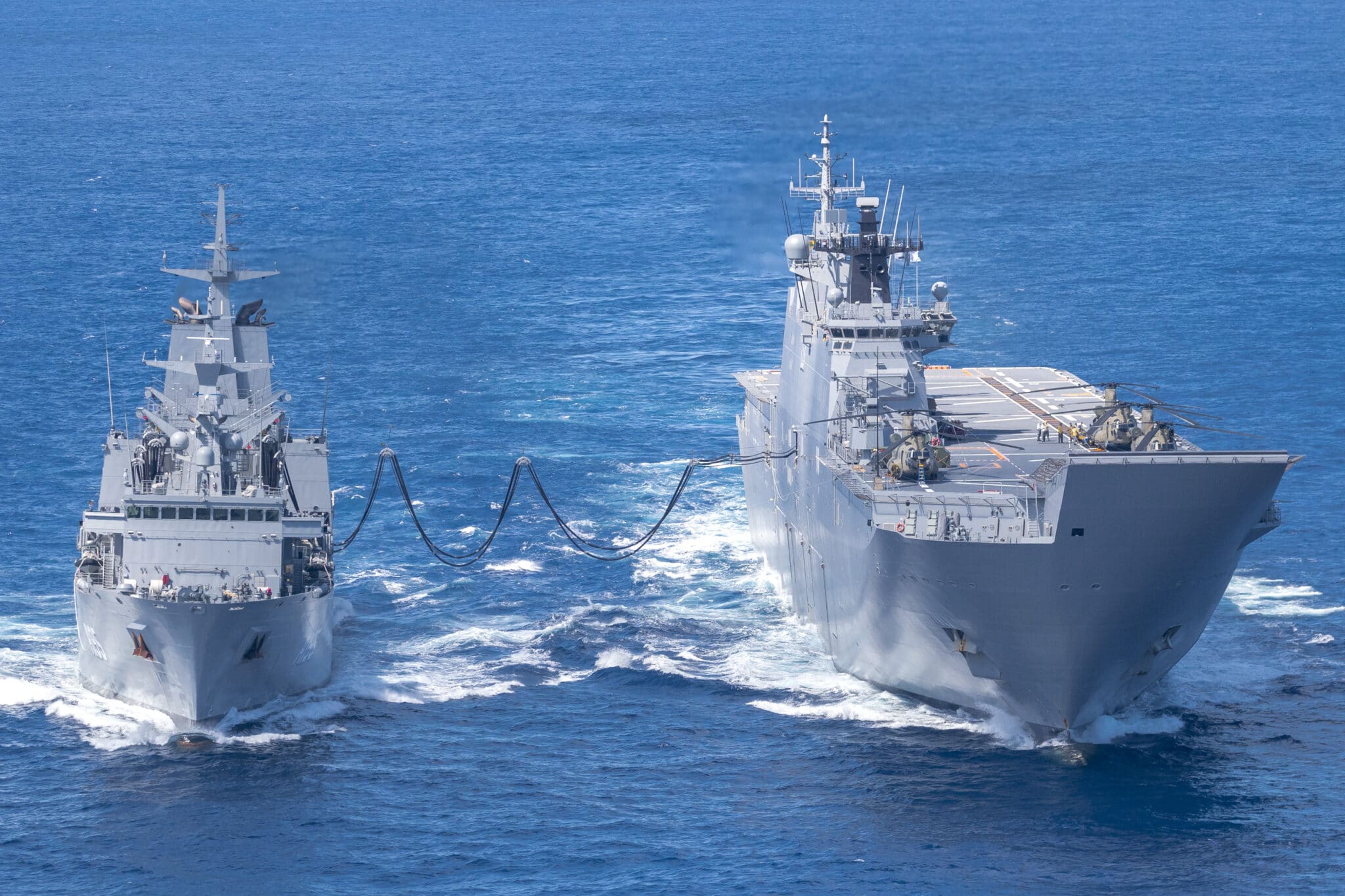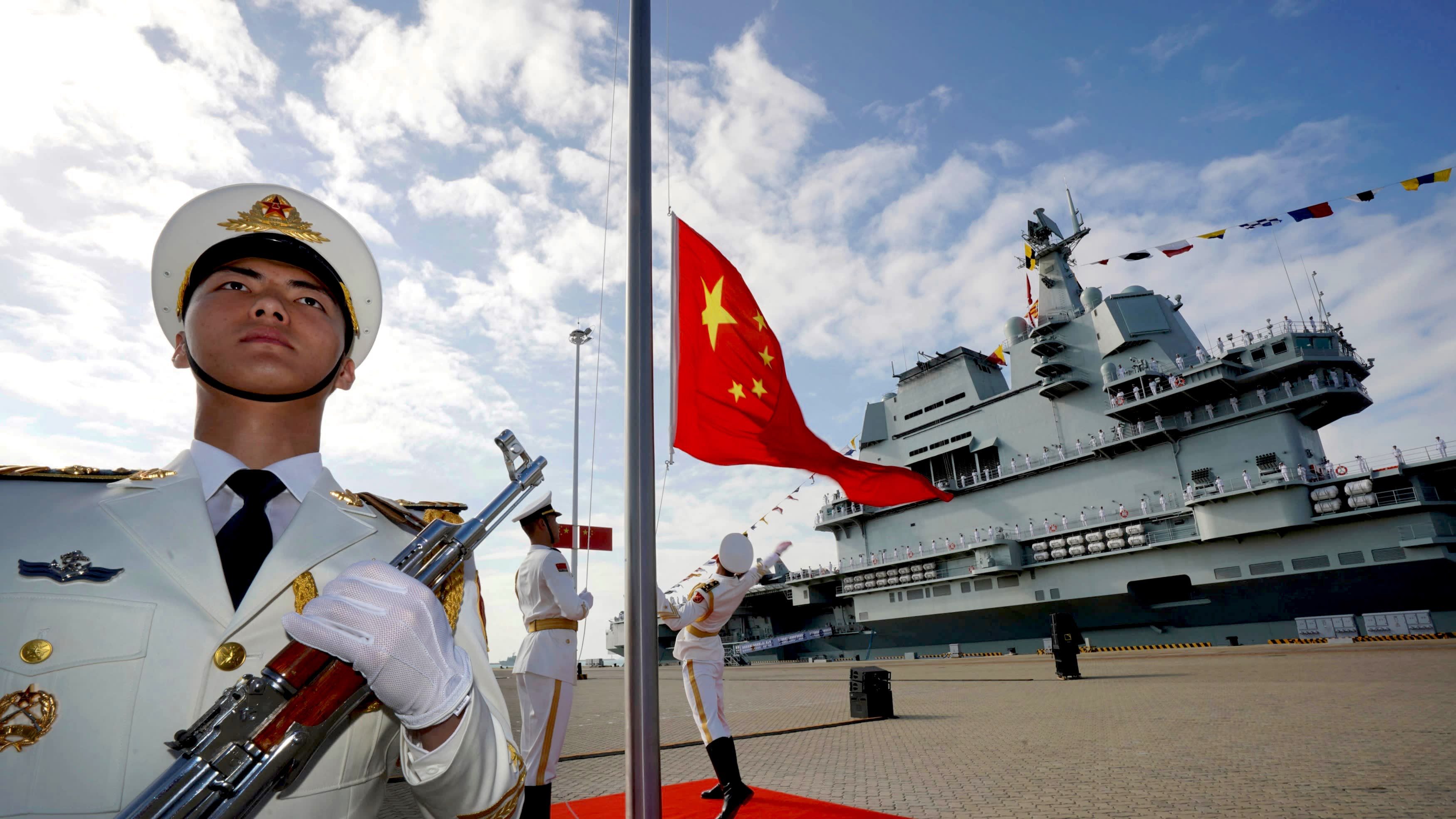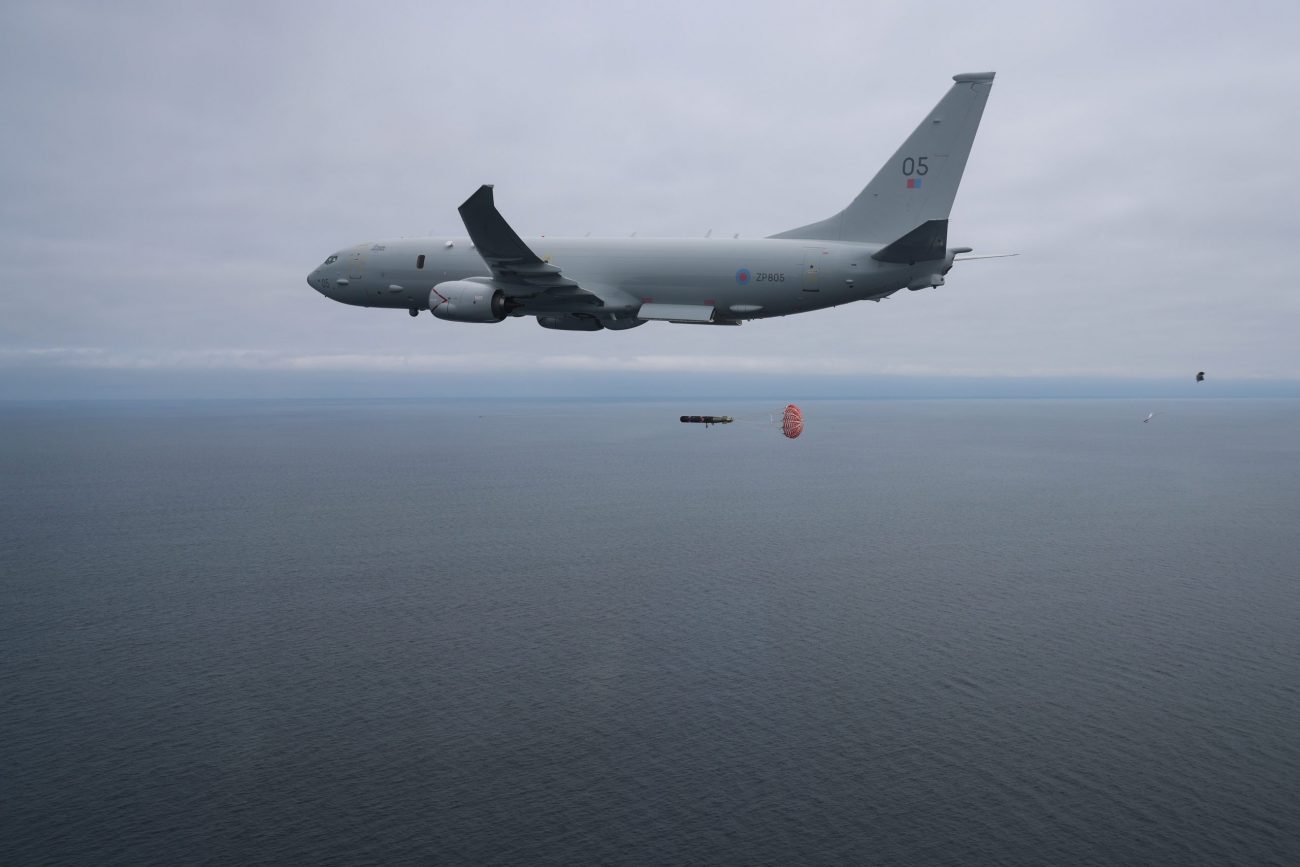Australia and New Zealand are sending their largest warships to one of the world’s biggest US-led international maritime warfare exercises, the Rim of the Pacific (RIMPAC). These drills come when China is making massive inroads into the Pacific.
America’s ‘Silent Killer’ — GDLD Releases ‘Cryptic Teaser’ Of Next-Gen Abrams Main Battle Tanks — Watch
On June 6, HMAS Canberra, an Australian warship, left Fleet Base East to begin the Royal Australian Navy’s third regional presence deployment, which will reportedly last for four months, involving several exercises beyond RIMPAC.
During RIMPAC, HMAS Canberra will join other Australian warships, HMAS Warramunga and HMAS Supply, and potentially a Collins-class submarine. The Australian group will be assisted by Navy clearance divers and Army personnel aboard Canberra, and in the air, the group will be supported by two Australian P-8A Poseidon aircraft.
The joint landing group aboard Canberra also features a Platoon from His Majesty’s Armed Forces, the military of Tonga.
Separately, another Australian group of warships, Sydney and Perth, will participate in multilateral exercises with Japan, South Korea, and the US.

It will be Australia’s first participation in the 3rd Fleet-led Ballistic Missile Defense (BMD) exercise, ‘Pacific Dragon.’
It will help build Australia’s capacity to operate the new SM-6 missiles, which the country is acquiring to provide terminal stage BMD capability for its Hobart-class air warfare destroyers, like HMAS Sydney.

As for New Zealand, the Royal New Zealand Navy’s largest and newest ship, HMNZS Aotearoa, left Devonport Naval Base on June 13 for an extensive Asia-Pacific deployment participating in RIMPAC and various other exercises.
In addition to Aotearoa, Navy divers and the 16th Field Regiment members will contribute to the event. One hundred eighty-five New Zealand Defense Force (NZDF) personnel will participate in RIMPAC.
Besides RIMPAC, HMNZS Aotearoa, a warship, will also visit Japan to participate in the Japan Maritime Self Defense Forces (JMSDF) international fleet review.
China Expanding Its Power In The Pacific
These deployments by Australia and New Zealand come when China appears to flex its muscles and expand its power in the Pacific region.
Earlier this week, Chinese President Xi Jinping signed a decree establishing a set of trial guidelines for “military operations other than war,” causing concern among China’s rivals about Beijing’s intentions.

“The outlines aim to prevent and neutralize risks and challenges, handle emergencies, protect people and property, and safeguard national sovereignty, security, and development interests, and world peace and regional stability said the Chinese State-owned Xinhua News Agency about the new order.
According to Chinese experts, “military operations other than war” refers to functions that do not involve combat, like disaster relief and humanitarian aid, and operations like maritime escorts and peacekeeping, where the use of force is limited.
These operations will also include counter-terrorism, anti-piracy, and peacekeeping missions. It will also comprise UN peacekeeping missions, providing public security goods to the international community, an unnamed Chinese military expert told the state-owned Global Times.

However, one of the concerning features of this order is that it calls for the Chinese military to “prevent spillover effects of regional instabilities from affecting China; secure vital transport routes for strategic materials like oil, or safeguard China’s overseas investments, projects, and personnel.”
According to Chinese experts, this part covers China’s actions to safeguard its “national sovereignty, security, and development interests.”
Whereas, Australian experts have expressed concerns that it lays the legal groundwork for expanding the Chinese military’s engagement in other countries just weeks after signing a security agreement with the Solomon Islands, an island nation only 2,000 kilometers from Australia.
The recently signed security pact with the Solomon Islands allows China to deploy its troops in the Pacific nation in a peacekeeping role.
According to the pact’s leaked text, there are provisions for Chinese ships to dock and refuel in the Solomon Islands. China could take an active role in regional instabilities and securing shipping routes.
“China is laying the groundwork for a military base in the Solomon Islands… something it could establish quite quickly,” Malcolm Davis, a senior analyst at the Australian Strategic Policy Institute, told 9News.
According to Davis, the new powers for China’s People’s Liberation Army were another example of “grey warfare” – coercive state-backed actions that fall short of conventional warfare.
Soaring Tensions Between Canberra And Beijing
Tensions between Beijing and Canberra are at an all-time high, as was witnessed in late May when a Chinese J-16 fighter aircraft intercepted an Australian P-8 maritime surveillance aircraft.

The incident was described by Canberra as “very dangerous,” as it involved the Chinese aircraft releasing a cloud of small aluminum strips, known as chaff.
Military planes release chaffs or flares as a countermeasure to confuse missiles. However, it can also sabotage an aircraft in flight.
In February, Australia had accused China of firing military-grade lasers on one of its P-8 aircraft from its warship. The claims, however, have been denied by Beijing.
- Contact the author at tanmaykadam700@gmail.com
- Follow EurAsian Times on Google News




